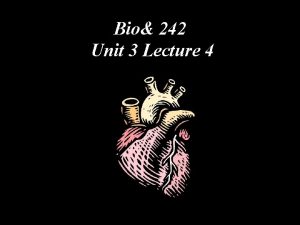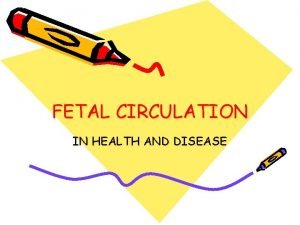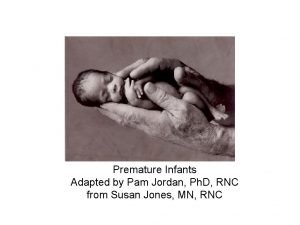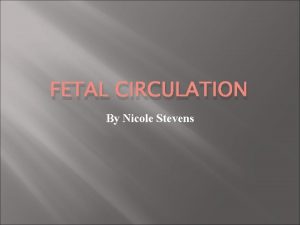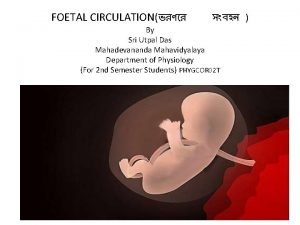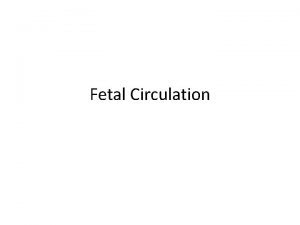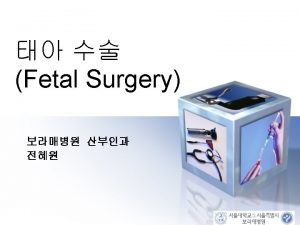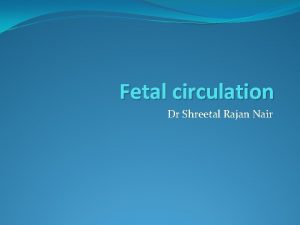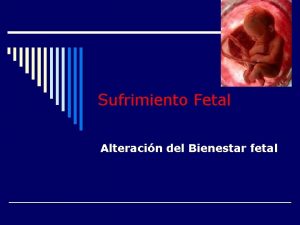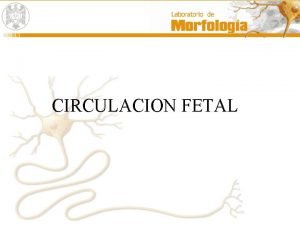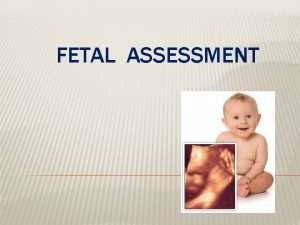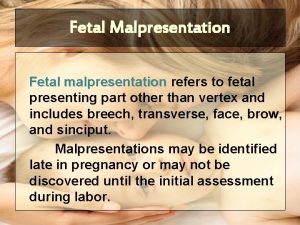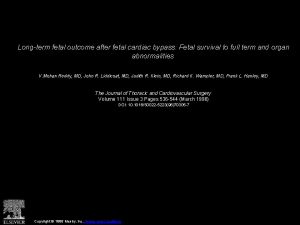Fetal Circulation pp 452 453 Fetal Circulation Fetal










- Slides: 10

Fetal Circulation pp. 452 -453


Fetal Circulation ¡Fetal heart develops in 3 rd-4 th week ¡At end of 8 th week, heart is functioning ¡The fetus does not use pulmonary circuit (can’t breath air inside the womb!) ¡All nutrients & waste are taken care of via mom

Fetal Circulation Placenta - organ responsible for delivery of nutrients, removal of waste products and delivery of oxygenated blood to the fetus via diffusion and active transport mechanisms.

Fetal Circulation – 4 differences 1. Umbilical cord • Umbilical vein delivers oxygenated & nutrient rich blood from the placenta to the fetus. • Umbilical artery travels towards the placenta with wastes & connects to iliac arteries 2. Venous duct • receives blood from the umbilical vein & directs it to the fetus’ inferior vena cava • Function: acts as a liver bypass & this is why chemicals ingested by mom can seriously affect fetus

3. Oval opening (foramen ovale) • an opening between the right atrium and left atrium • Function – to bypass the lungs • If the opening doesn’t close after birth, it can cause mixing of oxygenated & deoxygenated blood - “blue baby” - Corrected with open heart surgery 4. Arterial duct (ductus arteriosus) • connects the pulmonary artery to the aorta • Function – to bypass pulmonary circuit.


The path of the blood through the fetus: A. Begin with blood collecting in Right Atrium B. From there, blood can go into Left Atrium through Oval opening plus into Right Ventricle through atrioventricle valve. C. Right Ventricle to Pulmonary Artery. Most of blood will go through arterial duct into aorta. D. Aorta to tissue.

E. Umbilical arteries lead to placenta, where exchange of gases and nutrients take place. F. Umbilical vein carries O 2 rich blood. G. It enters the venous duct, passes through liver. H. Venous duct joins with inferior vena cava (it mixes here with deoxygenated blood) and this mixed blood goes back to the heart.




